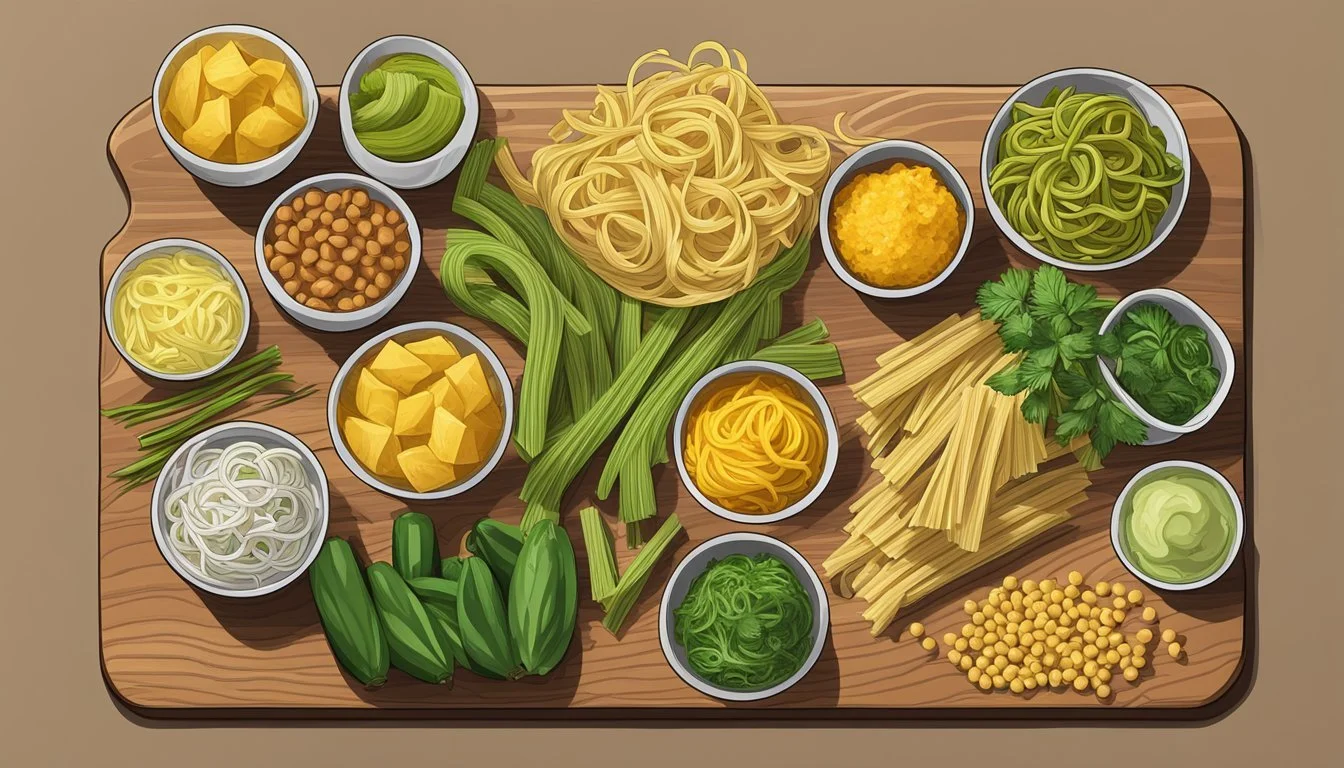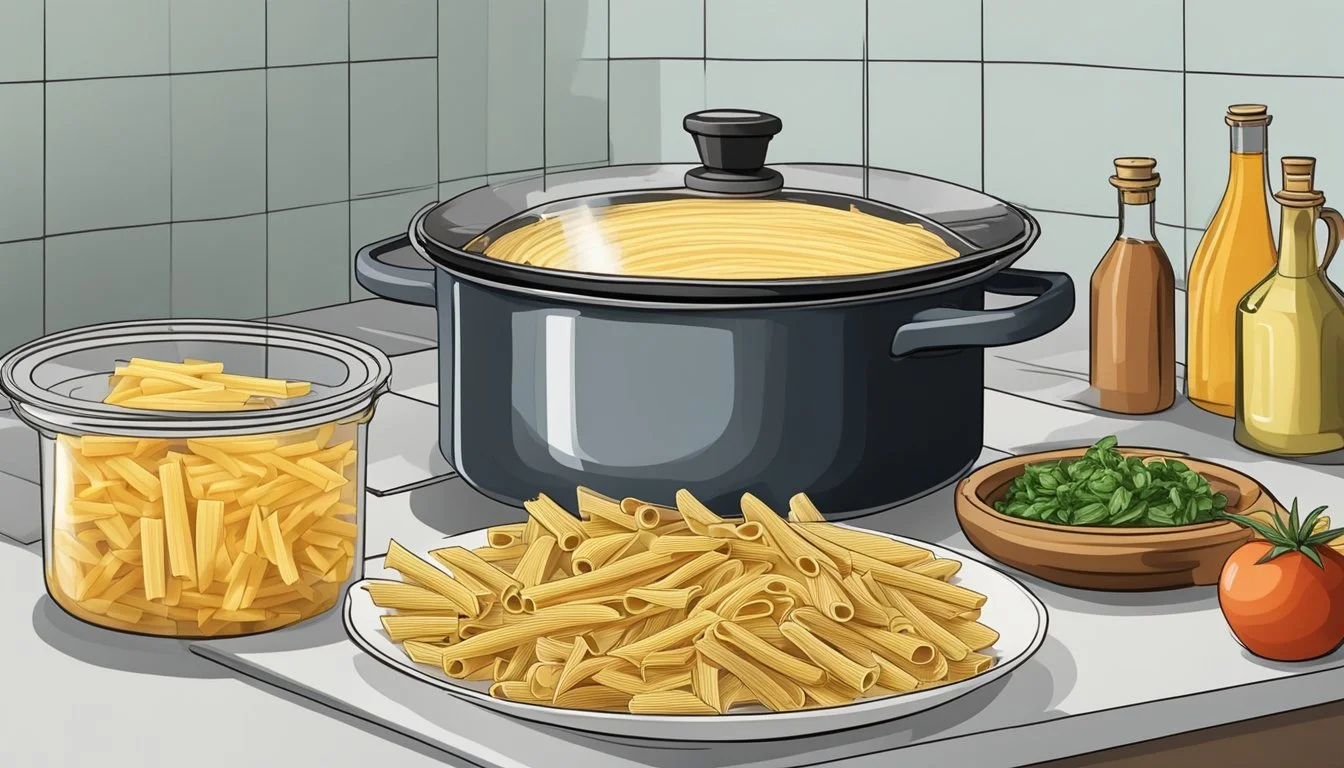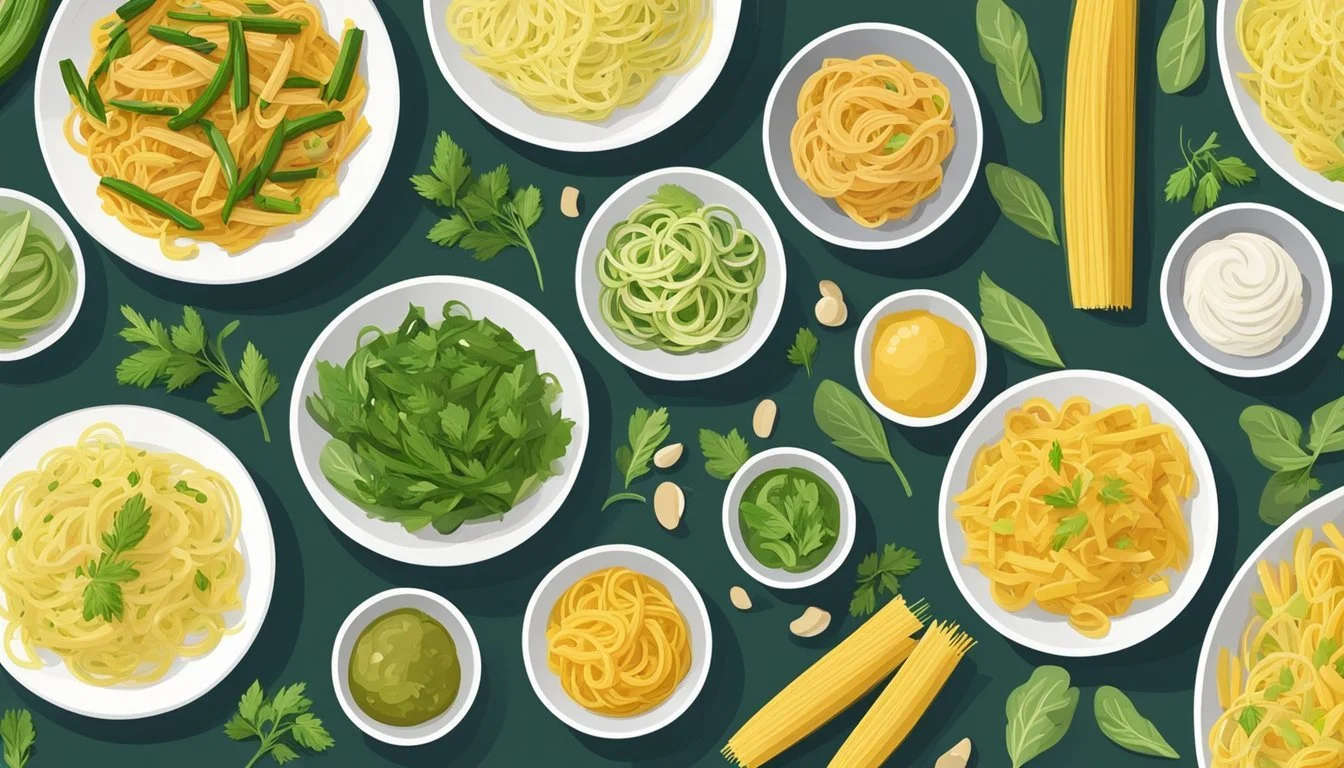Mezze Penne Pasta Substitutes
Top Alternatives for Your Recipes
Mezze Penne, a variation of the classic penne pasta (What wine goes well with pasta?), is a popular choice in many pasta dishes (What wine goes well with pasta dishes?) due to its versatility. It is similar in shape to traditional penne but shorter in length, making it ideal for a variety of sauces, from thick and chunky to smooth and creamy. The shape of mezze penne allows sauces to cling to the pasta, ensuring a flavorful bite each time.
When the pantry is lacking mezze penne, cooks need not worry as there are numerous substitutes that can take its place without compromising the integrity of the dish. For instance, penne, with its similar tubular shape and ridges, is an almost perfect stand-in, accommodating nearly any sauce meant for mezze penne. Other substitutes include rigatoni, which is slightly larger and a good option for heartier sauces, or the even smaller mostaccioli, which works well in baked pasta dishes.
Selecting the right pasta substitute is straightforward once one understands the role of pasta in a dish—to complement the sauce and other ingredients. When opting for a substitute, it's important to consider how the pasta's texture and shape interact with the sauce and the cooking time, as slight adjustments may be required to achieve the desired consistency and flavor profile. The goal is to ensure that each element of the meal comes together cohesively for a satisfying dining experience.
Understanding Mezze Penne Pasta
Mezze Penne is a distinctive pasta that stands out with its half-sized, tube-shaped, and diagonally cut ends. It offers a versatile base for various culinary creations due to its unique characteristics.
Characteristics of Mezze Penne
Mezze Penne is a tubular pasta with ridges and a hollow center. Its smaller, half-size lengths and oval shape allow it to capture sauces effectively.
Culinary Uses and Pairings
This pasta is ideal for Italian dishes such as baked pasta dishes and pasta salads. Mezze Penne pairs well with both light marinara and rich Alfredo sauces, holding the sauces in its hollow center and ridges.
Nutritional Profile
Typically made from durum wheat, Mezze Penne contains protein, fiber, carbohydrates, and a moderate calorie count. Whole wheat varieties offer a higher fiber content.
Cooking Mezze Penne to Perfection
For perfectly cooked Mezze Penne, aim for al dente, which usually requires boiling for about 7-9 minutes. Season the cooking water with salt and, optionally, a pinch of pepper.
Purchasing Mezze Penne
Mezze Penne can be found in supermarkets, typically available in durum wheat, whole wheat, and gluten-free options such as brown rice or chickpea pasta.
Alternative Pasta Shapes
While Mezze Penne has its unique characteristics, other pasta shapes like Rigatoni, Fusilli, and Ziti offer varied textures and are potential substitutes.
Common Mezze Penne Substitutes
Ziti pasta and Mostaccioli are suitable substitutes, with similar tube shapes. For a firmer, chewy texture, choose pasta like Rigatoni or Ziti, which are larger and often have ridges.
Exploring Texture and Flavor in Substitutes
Substitutes for Mezze Penne should ideally have a chewy texture and ridges to mirror its sauce-holding capability. Whole wheat pasta offers a nutty flavor, while the gluten-free options tend to have a varied texture and flavor profile.
Gluten-Free and Low-Carb Alternatives
For those requiring gluten-free or low-carb alternatives, brown rice pasta and chickpea pasta are great options that still allow the enjoyment of Italian-inspired dishes without the gluten or higher carbohydrate content.
Pasta Substitute Options
Seeking alternatives to mezze penne pasta encompasses a range of whole grains, legume-based options, and creative vegetable-based solutions. These substitutes not only cater to dietary preferences and restrictions but also introduce a variety of textures and flavors to traditional pasta dishes.
Whole Grains and Other Starches
Whole grains offer a hearty texture and are often richer in nutrients compared to traditional white pasta. Quinoa, a complete protein, can be used in its whole form or as a base ingredient in pasta alternatives. Brown rice noodles present a gluten-free option, with a similar consistency to wheat pasta yet boast a distinctive nutty flavor. They work well in a broad spectrum of recipes, seamlessly substituting mezze penne.
Vegetable-Based Alternatives
Vegetables have become stars in the pasta substitute arena due to their nutritional content and lower carbohydrate profile. Zucchini, when passed through a spiralizer, transforms into zoodles, a popular pasta stand-in. Spaghetti squash can replicate noodle strands — simply bake and scrape out the flesh with a fork. Other vegetables like beets, butternut squash, and eggplant can be sliced or spiralized, offering a colorful and flavorful pasta alternative.
Legume and Specialty Flour Pastas
Legume-based pastas, such as chickpea pasta, are gaining popularity for their high protein content and gluten-free nature. These pastas maintain a firm texture and complement a variety of sauces. Specialty flours, like those made from quinoa, contribute a unique taste and are often chosen for their gluten-free properties, making them suitable for those with dietary restrictions.
Exotic and Unique Substitutes
In the quest for low-calorie and low-carbohydrate options, shirataki noodles made from the konjac yam, offer a unique substitute, mimicking the texture of traditional pasta with almost no calories or carbs. Another exotic alternative is kelp noodles, which provide a mineral-rich option with a slight sea-infused essence, perfect for Asian-inspired dishes. These alternatives dare consumers to break from tradition and explore global culinary trends.
Preparing Substitutes for Mezze Penne
When selecting a substitute for mezze penne pasta, one aims to match cooking times and texture. It's important to choose pastas that can be cooked to al dente, maintain integrity in different recipes, and carry flavors effectively.
Cooking Techniques for Alternative Pastas
For substitutes such as farfalle or rigatoni, the pasta should be boiled in generously salted water. Cooking times vary, but generally, it's until the pasta is al dente, firm to the bite. For example, farfalle typically cooks in 10-15 minutes. One should stir occasionally to prevent sticking and ensure even cooking.
Seasoning and Flavoring Pasta Substitutes
To achieve rich flavors, herbs and spices play a pivotal role. For instance:
Garlic: Essential for an aromatic base in Italian cuisine, sauté in olive oil before adding sauces.
Chili Pepper: Add during cooking for a spicy kick, particularly with lighter sauces.
Lemon: Zest or juice can be incorporated into sauces or dressings for a fresh, citrusy note.
Creative Sauces for Diverse Textures
The texture of substitute pastas should complement the sauce's consistency:
Marinara Sauce: Best with pastas like fusilli or rotini that trap the tomato-based sauce.
Cheesy Sauce: Thicker pastas like macaroni or gobetti are excellent for holding creamy, cheese-based sauces.
Pairing each substitute with the right sauce ensures that the texture and flavor profiles are maintained.
Adapting Recipes for Pasta Alternatives
Different pastas can be adapted into recipes originally calling for mezze penne:
Casseroles: Opt for ziti or mostaccioli as they hold up well in baked dishes.
Lasagna: Flat noodles like lasagna sheets can be used in place of mezze penne for a layered approach.
Pasta Salad: Substitute with orzo or rotini for a salad with a bite that's reminiscent of mezze penne's texture.
Health and Dietary Considerations
When considering substitutes for mezze penne pasta, one must examine the nutritional content and how it aligns with various diet plans and health goals, such as low-carb, high-fiber, or gluten-free needs.
Analyzing Caloric and Carbohydrate Differences
Substitutes for pasta often aim to provide lower calorie and carbohydrate options. For instance:
Zucchini noodles: Approximately 20 calories and 4 grams of carbohydrates per cup.
Shirataki noodles: Often contain less than 10 calories per serving with minimal carbs.
By choosing these alternatives, one can enjoy a pasta-like experience with significantly reduced caloric and carbohydrate intake.
Exploring Fiber and Protein in Pasta Alternatives
Not all pasta substitutes are created equal, especially regarding fiber and protein content. Here's a comparison:
Quinoa pasta: A good source of protein and fiber, offering about 4 grams of protein and 2 grams of fiber per cooked cup.
Brown rice pasta: Slightly higher in protein and fiber compared to traditional pasta, providing a more satiating meal.
Incorporating pasta alternatives with higher fiber and protein can support better digestion and provide longer-lasting energy.
Understanding Gluten Intolerance and Pasta
Gluten-free alternatives cater to those with gluten intolerance or celiac disease, presenting options that do not compromise taste or texture. Popular gluten-free options include:
Rice noodles: Gluten-free and offer a similar texture to traditional pasta.
Corn pasta: Also gluten-free, and they provide a taste and consistency similar to regular pasta.
These alternatives ensure that individuals with gluten sensitivities can still enjoy a variety of pasta dishes.






